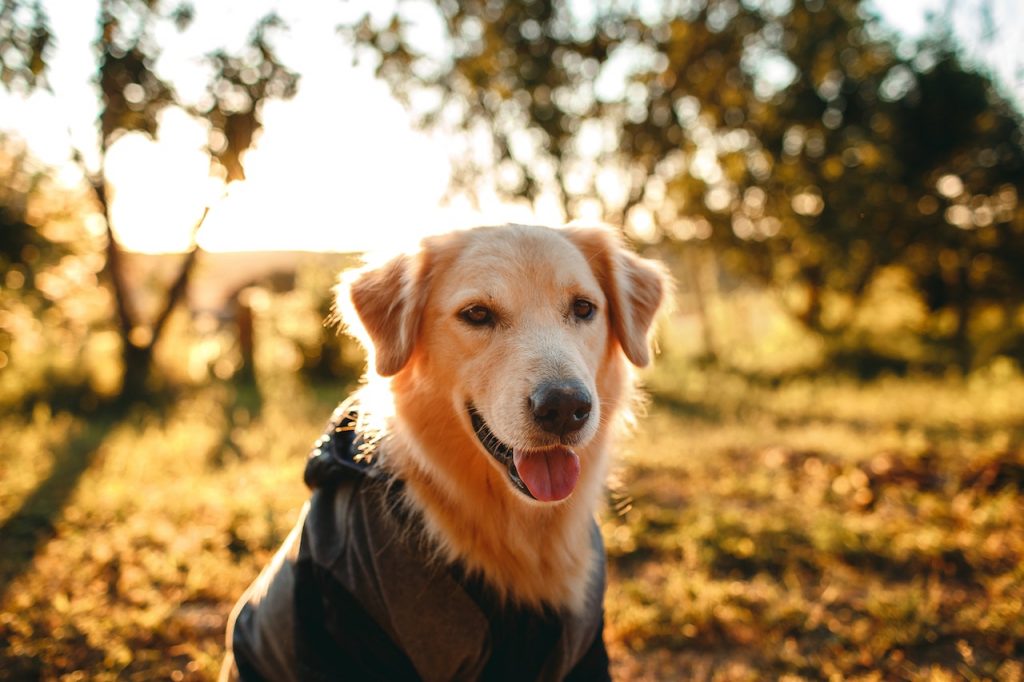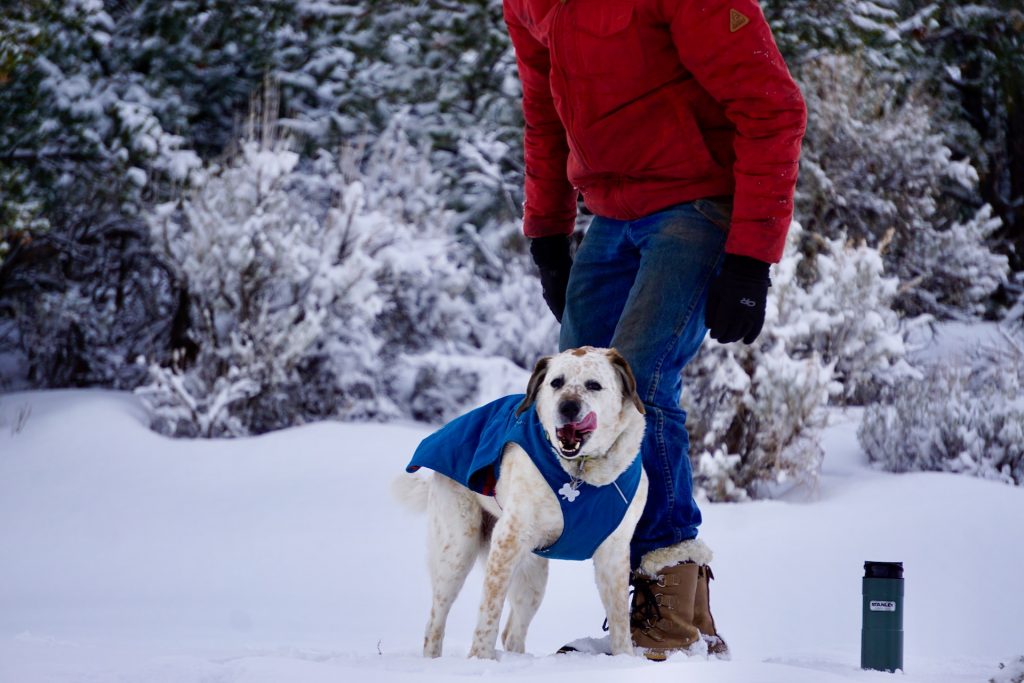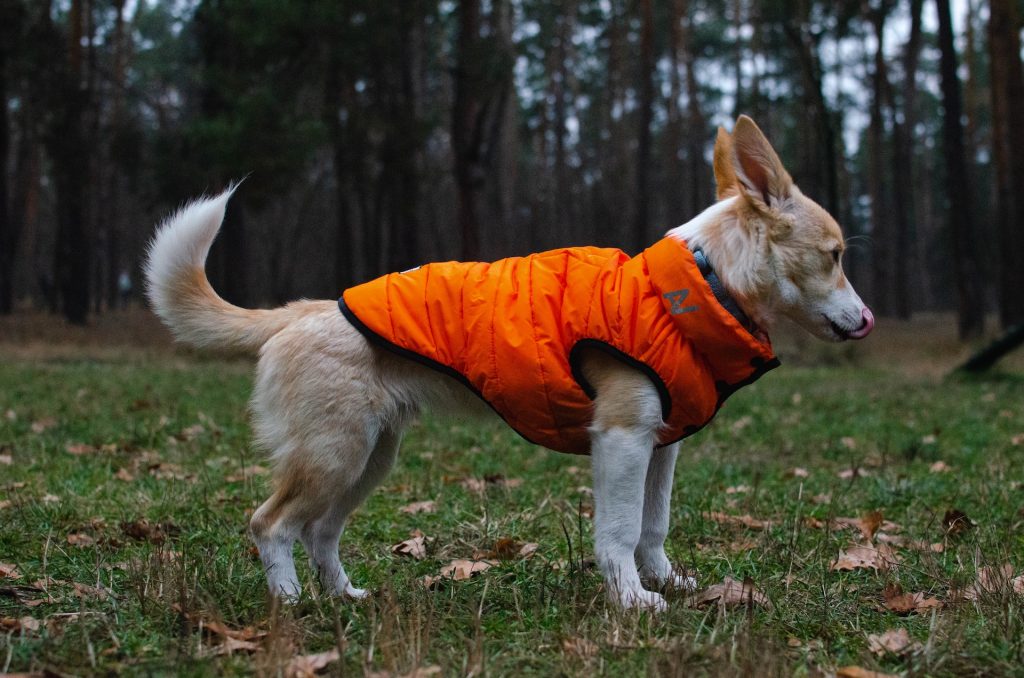The arrival of fall means an end to the dog days of summer and its pleasant weather and the beginning of frigid mornings, brisk temperatures, and impending snow and ice. It’s not just outdoor adventurers affected by the change in season, but also their pups. Like many of us, most of our dogs will also need a coat (in addition to their furry one) to fend off foul fall and winter weather. Here’s how to choose the best dog jacket for your pup.
Does Your Dog Need a Jacket?
While dogs have their own built-in coat of fur that keeps them warm all year round, they aren’t immune to extreme cold. When the temperatures drop, they shiver just like us, quickly becoming distressed by the weather. According to the American Kennel Club, dogs can face issues like hypothermia and frostbite just like humans.
Some dogs are more susceptible to chilly autumn and biting winter temperatures than others. Dogs with lean bodies and short hair (like Greyhounds and Whippets), senior dogs and puppies, and dogs who are ill or recovering from an injury all benefit from the added protection provided by a jacket. Conversely, some dogs are more immune to the cold than others—breeds like Siberian Huskies, Malamutes, and Bernese Mountain Dogs have dense natural coats and thrive in cold weather. That said, even hardier breeds can benefit from wearing a jacket at times.
The fact is, most dogs will benefit from a jacket. Dogs more sensitive to the cold are better served by an insulating piece designed to help keep them warm, while a lightweight and waterproof coat can help minimize drying and brushing time after wet-weather adventures for more thickly coated breeds.
What to Look for in a Dog Jacket
There are a few different features that you should consider to optimize your chances of finding the best dog jacket for your pup.
Size
The shapes and sizes of dogs vary greatly based on factors like breed, activity level, and diet. As a result, it’s often challenging to find a jacket that fits both its length and width. Measuring your dog is the first step to finding a properly fitting jacket. Length, girth, and neck are the three most common measurements.
- Length is measured from where a dog’s collar sits to the base of its tail
- Girth is the measurement around the back of its front legs and over its shoulders (the widest part of your dog)
- Neck is the circumference of where a dog’s collar normally sits
While measurements are a good guide for finding a well-fitting jacket, they’re not perfect. If possible, bring your dog along and have them try them on for fit. Have a shopping date with your pup? Here are a few tips for an adventure to the store with your dog.
Fit
Fit is key when choosing a dog jacket. A properly fitting dog jacket should cover your dog’s neck and belly, fit snugly (but not tight), and be easily taken on and off. Before braving the elements, make sure the jacket isn’t restricting your pup’s movement or rubbing them and irritating the skin. An ill-fitting jacket can not only cause your dog discomfort but can also inhibit the jacket’s ability to keep your pooch warm and dry.
It’s also worth thinking about how a jacket fits with accessories. For example, will it fit over a harness (if your dog wears one)? If so, does it have a port for the leash?
Coverage
Some dog jackets feature sleeves while others do not. Sleeves that cover either all four legs or just the front legs can add additional warmth to dogs who run cold and help prevent the snowballs that build up on the underside of some shaggy dogs. Sleeveless jackets are generally easier to get on and off and are easier to fit pups with broad shoulders, thick necks, and wide chests.
Warmth
Depending on the adventure, humans might wear jackets that range from light layers to very heavy layers. Dogs can also benefit from having different layers to match fluctuating temperatures. For this reason, pet owners should consider the temperature ranges for which their pup will need a jacket and choose the one (or more) that best fits that window.
- Insulated jackets work great for dogs particularly sensitive to cold temperatures and those playing in super-cold climates
- Fleece jackets are a great option for cool weather and are easily layered under a shell for outings in cold wet weather
Weather Resistance
Humans may work to keep themselves dry by avoiding these obstacles on their adventures, however, most dogs don’t stray away from outdoor obstacles like puddles and snowbanks. If wet weather adventures are in your dog’s future, consider a dog jacket that’s waterproof or water-resistant.
Durability
Dogs aren’t usually careful with their gear, which makes durability a key component in jacket choice. Unless you want to have to regularly purchase new jackets for your pups, be on the lookout for rugged dog jackets with high abrasion and puncture resistance in order to extend their longevity.
Washability
Every pet owner knows that it doesn’t take a grand adventure for their pals to become extremely dirty. It seems like the more disgusting something is, the more dogs are attracted to it. If your pup can’t stay out of mud puddles or help itself from rolling in the dirt, a jacket’s washability is an important factor to consider. Is the jacket machine washable? Can you put it in the dryer or does it need to be hung out to dry? In general, the easier a jacket is to care for, the better.
Other Considerations When Choosing a Dog Jacket
Above are some general guidelines for choosing a dog jacket, but there are some other factors you might want to think about before making a decision. A few other consideration include:
- Compatibility with other accessories, (for example, does it have a hole for a leash to run through?)
- Reflectivity is a nice touch for pups who recreate in low light
- Color is at times as much about performance as appearance; consider a blaze-orange jacket if your pup hikes during hunting season
The Best Jacket for Your Dog
Packing the proper layers for your pup is an important step to hitting the ground with four paws running on fall foliage treks, winter hikes, and even trips around the neighborhood with your dog.
Mary Beth Skylis
Mary Beth began her journey in the outdoors while thru-hiking the Appalachian Trail in 2015. She soon went on to backpack the Colorado Trail, and part of Nepal's Annapurna Circuit. Today, she resides in North Carolina where she can commonly be found rock climbing, surfing, or backpacking. Some of her recent work can be found in Outside and Backpacker Magazines.








